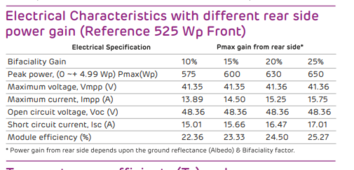zanydroid
Solar Wizard
The gain could also be on top side due to cloud lensing , and there could be some gain from being cold.Secondly, as shown in attachment, yesterday, it was over caste, cloudy day. I noticed that around 11 am, the system reached 5330 W (Installed capacity is 5220 W). Since, the panels are bifacial, I guess, due to scattering, the panels were producing from lower side as well.
IOW the power can exceed nameplate on a monofacial too since the specs are not a hard limit. If you moved a solar panel to a closer orbit around the sun it will generate more (assuming it stays at normal temp).
I believe white rocks or gravel are standard ways to try to help out bifacial. That gives diffuse scatter which may be better across more hours of the day than a reflector at a constant angle. Also you need to keep the maintenance overhead in mind, and the fact that solar panels are really cheap anyway.






